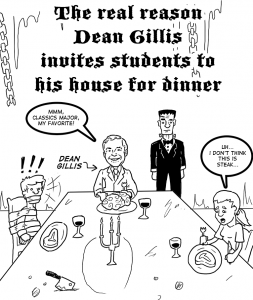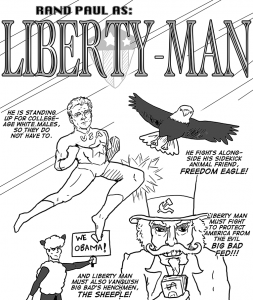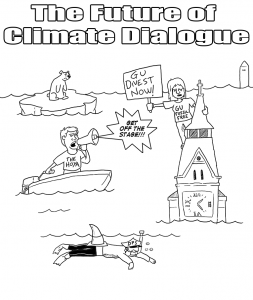Ann-Mary and I live in a sort of half-renovated brownstone apartment between the black part of town and the gay part of town. We leave our apartment and turn right when we want to eat at the Haitian restaurant. We leave our apartment and turn left to buy organic groceries. We live on the second floor. Below us is an older woman who gets Meals-on-Wheels. Her name is McCarthy or McCaffrey, and we think she’s a holdover from before the gays and the blacks. Above us lives another young couple who we brought to the Haitian restaurant one time and who seemed nice, but after dinner discretely asked if we were open to possibilities. We haven’t seen them since; we only hear them sometimes. They are great friends with an older man who lives across the street and writes for the Repertory Theatre. We have never seen any of his plays, and though he insists they are critically acclaimed, we wonder aloud to each other why he is living on our street.
On Saturdays we leave the apartment and turn right and follow Centre Street down to the heart of the black part of town where they have an open-air market. We buy okra, rice, crayfish, and plantains that I use to make my Saturday night jambalaya. The black civic leaders are very proud of their neighborhood and it’s safe to walk there in the daytime. At night sometimes there’s live music in Thayer Park, but we never go because between us and Thayer Park are the South Street Housing Projects where that kid was shot a year ago.
Saturday jambalaya is the high point of our week. I fill the crock pot with the okra, rice, crayfish, and plantains from the market and sometimes I add some fresh fish and usually black beans. I stir in the spices while Ann-Mary touches up a watercolor of a swan boat. We play Scrabble while the crock pot simmers, and after dinner we play more Scrabble or we read and then we go to bed. Lying intertwined, salty and happy, we wonder to each other about the old woman.
“I bet she used to be the Queen of some misty northern island,” we say. “Or maybe she’s the Princess Anastasia.”
Or we make plans.
“Tomorrow,” says Ann-Mary, “I’m going to go down to Bishop Street and see if I can’t get the dealer to take another look at my painting of the weeping willow.”
“When I get home let’s take a walk through the Thayer Park,” I say, “and then let’s nap away the afternoon.”
If we leave the windows open we can hear the faintest trills of saxophones in Thayer Park and the rumbles of the Orange Line. Sometimes just as we drift away, there is the soft pop-pop of a handgun. We close our eyes tight and hold each other until our hearts return to normal speed.
“I’d like to donate some of my work to the battered women’s shelter,” says Ann-Mary.
“I’ll help you pick out which ones tomorrow,” I say.
Sunlight breaks our trance and I shower hurriedly while Ann-Mary makes toast. We eat together silently. We can afford neither television nor a morning paper. I take the Orange Line into the city proper, and work in the university library from 7 to 2. In the fall, I’ll take the ACATs, and if I do well enough I might get a scholarship to Suffolk or work part time, and maybe after I graduate and take the UCPA we’ll move into the city proper and Ann-Mary will sell her watercolors, and then I’ll join a firm, and we’ll move out into the suburbs and start a family. We’ll have space for a barbeque and I’ll make mixed grill on Sunday afternoons.
I get off the Orange Line at the Thayer Park stop and walk the six blocks through the black part of town to our apartment. When we moved here we were three blocks within the black neighborhood. Now we’re just on the border. I wonder how long it will be until the black neighborhood is gone altogether. And after the gays? Maybe it will be bohemian and then white again and then Latino or black and then gay.
Ann-Mary is inside crying because the dealer turned her down again and she’ll never be an artist and she’s a failure and she should still be in school and she’s going to have to move back with her parents.
“Don’t say that,” I say. “Don’t say that.” We take a walk through Thayer Park and everything’s all right.
Maybe in ten years we’ll bring our children to Centre Street and show them where we used to live. Mrs. McCaffrey or McCarthy will be gone, but maybe the theatre writer will emerge from our building, fresh bruises on his wrists and ankles and cross the street to his own apartment.
“There?” our children will ask. “You lived there?”
“There,” we’ll say, “in our wild and vigorous youth.”




